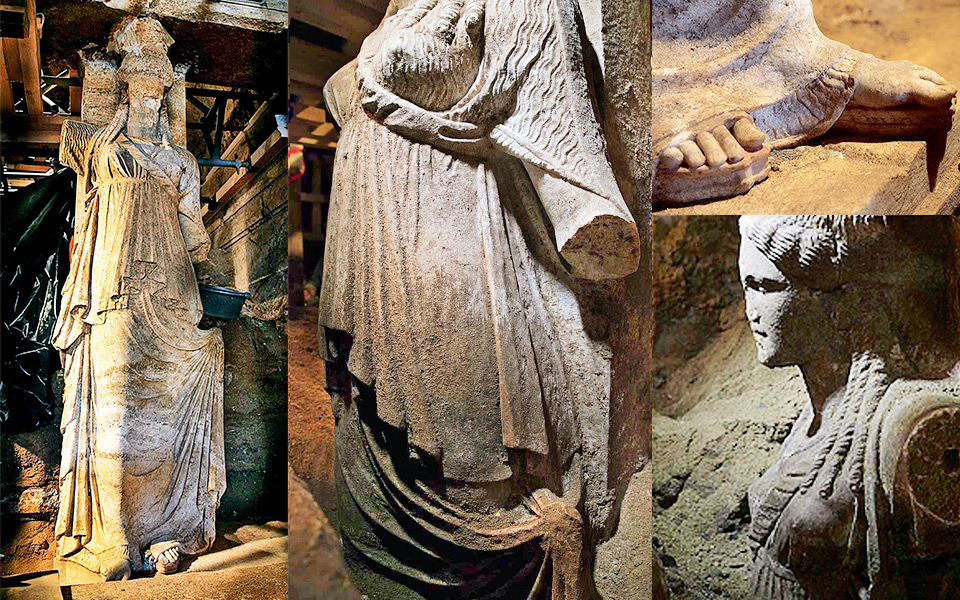The ancient Macedonian site most in the news these days may be Amphipolis (“Both-Sides City”), a prominent, strongly fortified hill in a bend of the Strymonas River. Long an important cultural and commercial crossroads, Amphipolis became a coveted Athenian colony, bitterly disputed between Athens, Sparta and Macedonia in the 5th and 4th centuries BC. This now tranquil archaeological park at the top of the Aegean was the scene of decisive military battles and historic diplomatic missions; a place of confinement and eventual execution for Alexander the Great’s Persian-born queen Roxana and young son Alexander IV; later, the capital of Roman Macedonia; and, in the 5th and 6th centuries AD, an Early Christian seat with five impressive churches and a bishop’s palace. Since the renewal of excavations by the 28th Ephorate of Prehistoric and Classical Antiquities on the site’s Kasta Hill in 2012, however, much attention has been focused on the discovery of the largest funerary monument ever found in Greece – a tumulus containing a three-chambered Macedonian tomb, enclosed by an enormous (158 m in diameter) circular wall of gleaming white Thasian marble, which may have been the final resting place of Alexander’s close friend Hephaestion.

“Analysis of the tomb’s disturbed contents is proceeding, but whether it belongs to Hephaestion or another historical figure remains a fascinating puzzle.”
The area of Amphipolis was where Alexander I decimated Xerxes’ retreating Persian army in 479 BC. Later (465 BC), Athens lost 10,000 initial colonists, when they were overrun by fierce Thracian locals. The colony was reimplanted in 437 BC, but soon attacked by Spartans in 424 BC. Their leader, Brasidas, although killed in battle, was hailed as a liberator and a local hero. Following Philip II’s seizure of Amphipolis in 358/357 BC, the city served as a forward military base for his, and later Alexander’s, eastward campaigns.
Visitors today can explore much of the Amphipolis hill and surroundings, as well as its excellent museum. Worth seeing are the Lion of Amphipolis; the city’s Classical-Hellenistic fortifications; the gymnasium; the Early Christian basilicas; a Byzantine/medieval watchtower (being restored); and the preserved pilings of a 2,500-year-old wooden bridge that spaned Strymonas River into the 19th century.

© Konstantinos Tsakalidis
The newly unearthed Kasta Tomb, not yet open to the public, is dated to the last quarter of the 4th c. BC. Two marble (now headless) sphinxes flank its entrance, while two female caryatids support the doorway to the second chamber, where a polychrome mosaic depicts the Abduction of Persephone to the Underworld.
The third, innermost chamber, closed with a marble door typical of Macedonian tombs, contained five burials in a vault beneath its floor: an elderly (60+) woman, two middle-aged (35-45) men, a newborn and a fifth cremated individual, probably an adult. Analysis of the tomb’s disturbed contents is proceeding, but whether it belongs to Hephaestion or another historical figure remains a fascinating puzzle.










